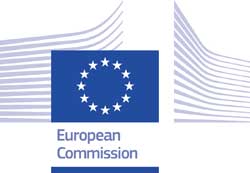A new European Commission report shows how interchange regulation has lowered merchants’ payment card acceptance costs and taken more than $3 billion a year from card issuers’ top lines.
The EC, the executive arm of the Brussels-based European Union, implemented its so-called Interchange Fee Regulation in 2015 and 2016. The rules capped debit card interchange at 0.2% of the sale and credit card interchange at 0.3%. Pre-IFR interchange fees “were highly diversified, elevated and non-transparent,” the commission said in a news release. “These fees represented an obstacle to single-market integration and created distortions of competition, including higher costs for retailers and consumers.”
The 36-page report “concludes that the main objectives of the regulation have been achieved, as interchange fees for consumer cards have decreased, leading to reduced merchants’ charges for card payments, and ultimately resulting in improved services to consumers and lower consumer prices,” the release says.

In some countries the regulation cut average interchange rates by well over half. Just before the IFR took effect, 16 of the 28 EU countries (the United Kingdom has since withdrawn from the EU) had average debit card interchange rates above the regulated level, with Croatia the highest at 0.8%, according to the report. With credit cards, 22 countries in 2015 had higher pre-IFR average rates, with the Czech Republic leading the pack at about 1.08%.
“The reduction in interchange fees resulted in a redistribution of revenues … from issuers to acquirers and merchants, while consumers in the longer run benefit either directly via lower final prices or indirectly through improved retail services,” the report says.
In fact, the annual effect of the IFR on issuers’ revenues, including higher network fees, was a negative €2.95 billion ($3.32 billion at current exchange rates), partly offset by increases in card usage and acceptance, the report says. The EC estimates the annual savings to merchants at €1.2 billion ($1.35 billion). Merchant acquirers, technically the entities that pay interchange to issuers, have gained revenues of €1.2 billion, offset by pass-throughs to merchants and higher network fees.
The international “schemes,” or networks, have seen a €550 million annual net gain, the EC estimates. Visa and Mastercard dominate credit and debit card payments in Europe, though some domestic networks remain, and American Express has a small slice of the credit card market.
“Scheme fees, which are not within the scope of the IFR, appear to have increased to a limited extent, in particular those imposed by international card schemes, while domestic scheme fees remained low and stable,” the report says. “Developments in scheme fees after 2018, the impact of rebates and incentives and the acquiring market will, however, require further monitoring.”
The report doesn’t definitively say how much of their savings merchants have passed on to consumers date, but it estimates merchants eventually will pass on 66% to 72% of their lower expenses. “Overall, the capping of interchange fees will over time entail significant benefits for consumers, by means of lower merchant service charges [discount rates] passed through into lower consumer prices, with estimated annual consumer cost savings of between €864 million and [€1.93 billion],” the report says.





